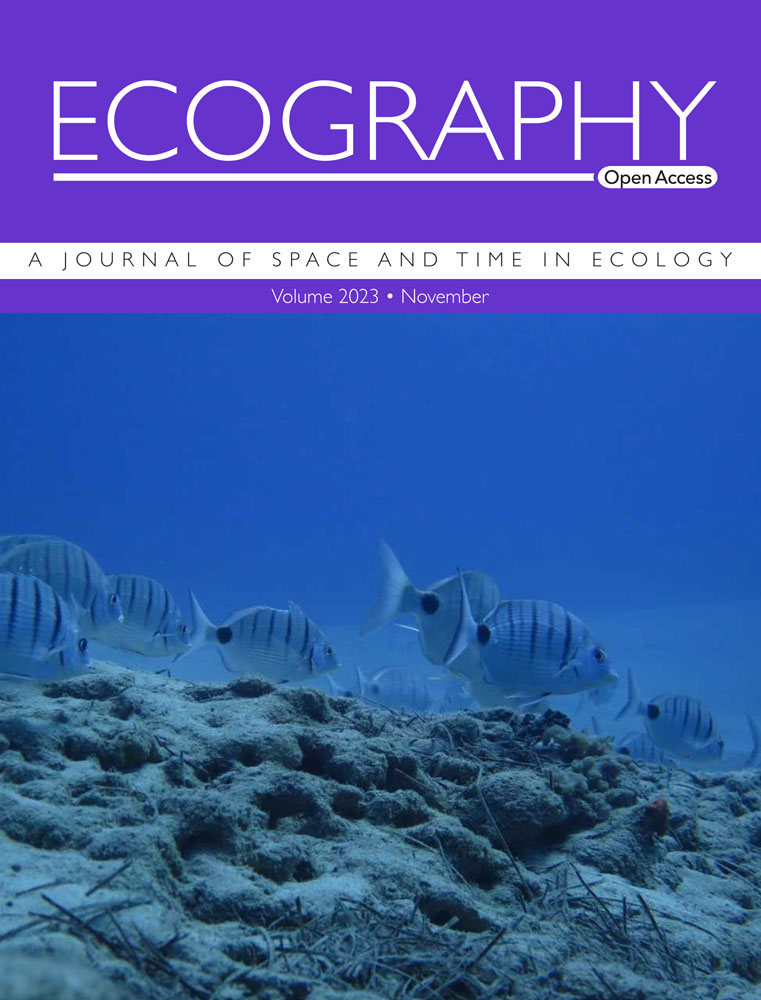The time of acquisition of multispectral predictors matters: the role of seasonality in bird species distribution models
IF 5.4
1区 环境科学与生态学
Q1 BIODIVERSITY CONSERVATION
引用次数: 0
Abstract
Species distribution models (SDMs) analyse the relationships between species occurrences and environmental predictors. Their efficacy largely depends on the selection of ecologically relevant predictors, with remote sensing (RS) data being one of the most commonly used sources. The usability of multispectral predictors is influenced by temporal changes in vegetation and environmental conditions. However, the impact of seasonality is often overlooked, despite its potential to affect model accuracy. This study aims to assess the influence of seasonality in RS predictors on SDM performance for bird species. The study was conducted for an area of the Czech Republic, using presence–absence data from the Breeding Bird Survey (2018–2021) covering 147 survey squares and 104 bird species. We used Sentinel‐2 satellite imagery to derive monthly and full‐season composites of vegetation indices and reflectance bands from March to September (hereafter ‘periods'). Precipitation, terrain, and vegetation structure were also included. SDMs were constructed using Lasso‐regularized logistic regression, and model performance was assessed through area under the ROC curve (AUC) and R². Linear mixed‐effects models were employed to evaluate model performance, temporal prediction stability, and predictor importance stability across all species. Our results show that model performance depends on the period from which the predictors were derived. This dependence varies significantly among species and is partially associated with habitat preferences and prevalence, with forest species exhibiting greater stability. Differences in model performance across periods aligned with shifts in predictor importance, causing different RS predictors to become significant with seasonal changes. In conclusion, seasonal changes in vegetation, as reflected in the temporal variability of RS predictors, significantly affect SDM performance and predictor selection. Although species' ecological characteristics played a role, the effects remained species‐dependent, making it difficult to develop universal recommendations. Nevertheless, accounting for seasonal variations in RS predictors can enhance model accuracy for many species.获取多光谱预测因子的时间很重要:季节性在鸟类物种分布模型中的作用
物种分布模型(SDMs)分析了物种发生与环境预测因子之间的关系。它们的有效性在很大程度上取决于生态相关预测因子的选择,遥感(RS)数据是最常用的来源之一。多光谱预测器的可用性受植被和环境条件的时间变化的影响。然而,季节性的影响经常被忽视,尽管它有可能影响模型的准确性。本研究旨在评估RS预测因子的季节性对鸟类SDM性能的影响。该研究是在捷克共和国的一个地区进行的,使用了繁殖鸟类调查(2018-2021)的有无数据,涵盖147个调查广场和104种鸟类。我们使用Sentinel - 2卫星图像获得了3月至9月(以下简称“时期”)植被指数和反射率波段的月度和全季复合数据。降水、地形和植被结构也包括在内。采用Lasso‐正则化逻辑回归构建SDMs,并通过ROC曲线下面积(AUC)和R²来评估模型的性能。采用线性混合效应模型评估所有物种的模型性能、时间预测稳定性和预测因子重要性稳定性。我们的结果表明,模型的性能取决于预测因子的推导周期。这种依赖性在不同物种之间差异很大,部分与生境偏好和流行率有关,森林物种表现出更大的稳定性。不同时期模型性能的差异与预测因子重要性的变化一致,导致不同RS预测因子随季节变化变得显著。综上所述,植被的季节变化(反映在RS预测因子的时间变异上)显著影响SDM的性能和预测因子的选择。虽然物种的生态特征起了一定的作用,但其影响仍然依赖于物种,因此很难提出普遍的建议。然而,考虑RS预测器的季节变化可以提高许多物种的模型准确性。
本文章由计算机程序翻译,如有差异,请以英文原文为准。
求助全文
约1分钟内获得全文
求助全文
来源期刊

Ecography
环境科学-生态学
CiteScore
11.60
自引率
3.40%
发文量
122
审稿时长
8-16 weeks
期刊介绍:
ECOGRAPHY publishes exciting, novel, and important articles that significantly advance understanding of ecological or biodiversity patterns in space or time. Papers focusing on conservation or restoration are welcomed, provided they are anchored in ecological theory and convey a general message that goes beyond a single case study. We encourage papers that seek advancing the field through the development and testing of theory or methodology, or by proposing new tools for analysis or interpretation of ecological phenomena. Manuscripts are expected to address general principles in ecology, though they may do so using a specific model system if they adequately frame the problem relative to a generalized ecological question or problem.
Purely descriptive papers are considered only if breaking new ground and/or describing patterns seldom explored. Studies focused on a single species or single location are generally discouraged unless they make a significant contribution to advancing general theory or understanding of biodiversity patterns and processes. Manuscripts merely confirming or marginally extending results of previous work are unlikely to be considered in Ecography.
Papers are judged by virtue of their originality, appeal to general interest, and their contribution to new developments in studies of spatial and temporal ecological patterns. There are no biases with regard to taxon, biome, or biogeographical area.
 求助内容:
求助内容: 应助结果提醒方式:
应助结果提醒方式:


